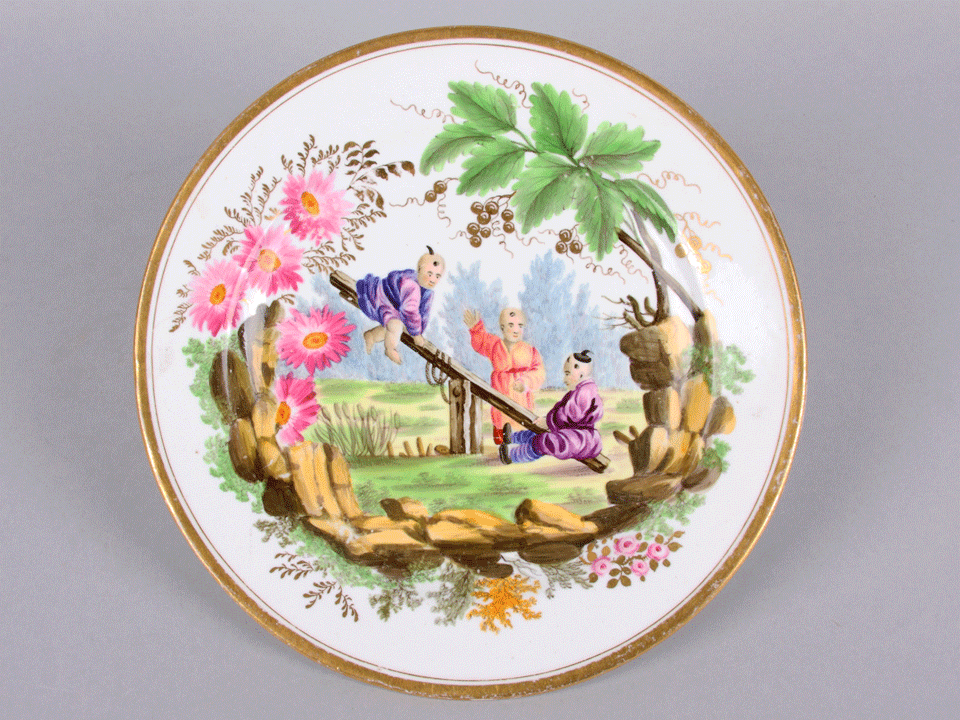
2012.91.150, gilded porcelain plate from the Minton factory, Stoke-on-Trent, 1805–1816.
For a side view of this plate, please click here. To see the maker's mark, please click here.
Eason Eige collection; photos by B. Bernard

2012.91.150, gilded porcelain plate from the Minton factory, Stoke-on-Trent,
1805–1816.
For a side view of this plate, please click
here.
To see the maker's mark, please click
here.
Eason Eige collection; photos by B. Bernard
If, as the saying goes, "Imitation is the highest form of flattery," Chinese ceramics are among the most flattered objects in the world. As potters around the world adopted Chinese artistic ideas, they also adapted those ideas to local preferences. The result was multiple artistic traditions that showed Chinese influence but that went in various directions.
In time, thanks to the Industrial Revolution, Europe became the most prolific producer of Chinese-inspired ceramics. This development took many decades, however. At first, only the richest and most powerful European families used "china," and early Western substitutes failed to compete with actual Chinese ceramics. The first serious imitation, Medici porcelain, was made in Tuscany for a few years in the late 1500s. A French imitation of the late 1600s, made in Normandy, went out of business after a couple of decades.
After 1700, however, a growing middle class demanded status symbols inspired by the lifestyles of the rich and famous. The result was a fad known as chinoiserie. Anything even vaguely oriental would sell, and anything that looked like porcelain was increasingly referred to as "china." The fad wasn't confined to ceramics, however. The large pendulous cuffs on men's coats and the plaited queues on the backs of their periwigs were attempts to imitate Chinese fashion. The royals of the period had elaborate rooms decorated with Chinese motifs.
Being able to say that you owned "real" china was an important part of the fad. In the late 1600s elite families began sending orders to China for personalized dinnerware that often included family crests. Still, "real" china was beyond the financial reach of most people, and China did not yet mass-produce the dinnerware shapes Europeans expected on their tables. Enter the great imitators. The first European center for porcelain production was Meissen, Germany, where production started in 1710.
English production began in the 1740s, and helped start the industrial revolution.
In 1741 Dr. John Wall, apothecary William Davis, and a group of investors
began producing what is known today as Royal Worcester. To see one of their pieces,
click on the first picture below. By selecting the other pictures, you can see
additional English imitations.
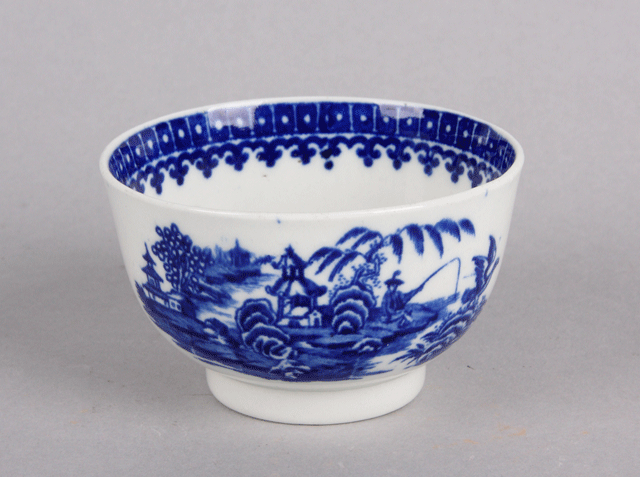
Worcester ware (click on picture to enter)
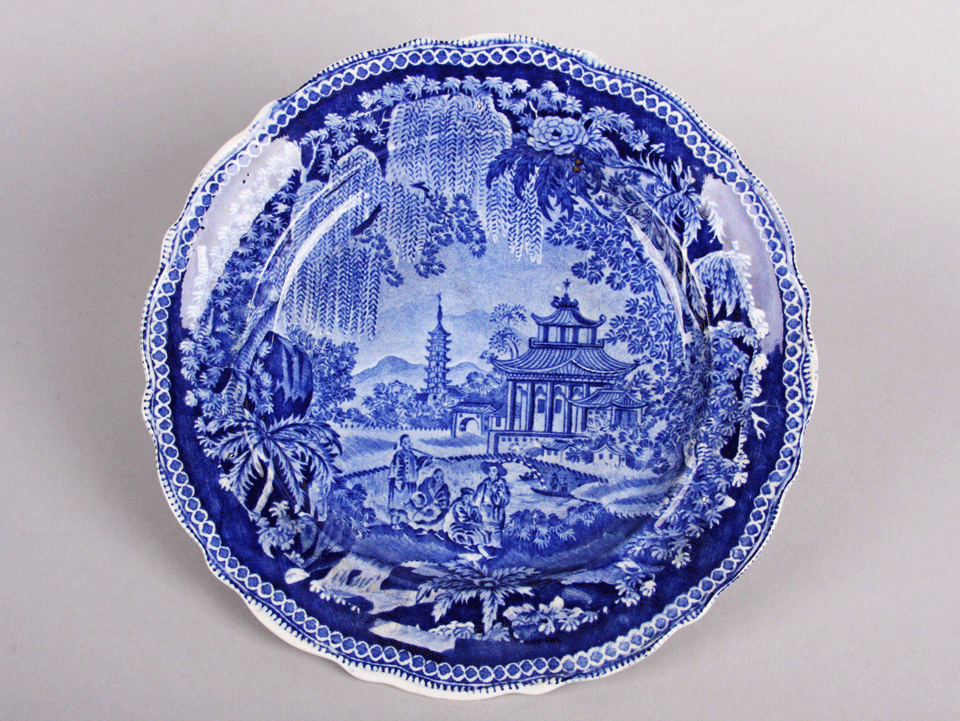
Staffordshire ware (click on picture to enter)
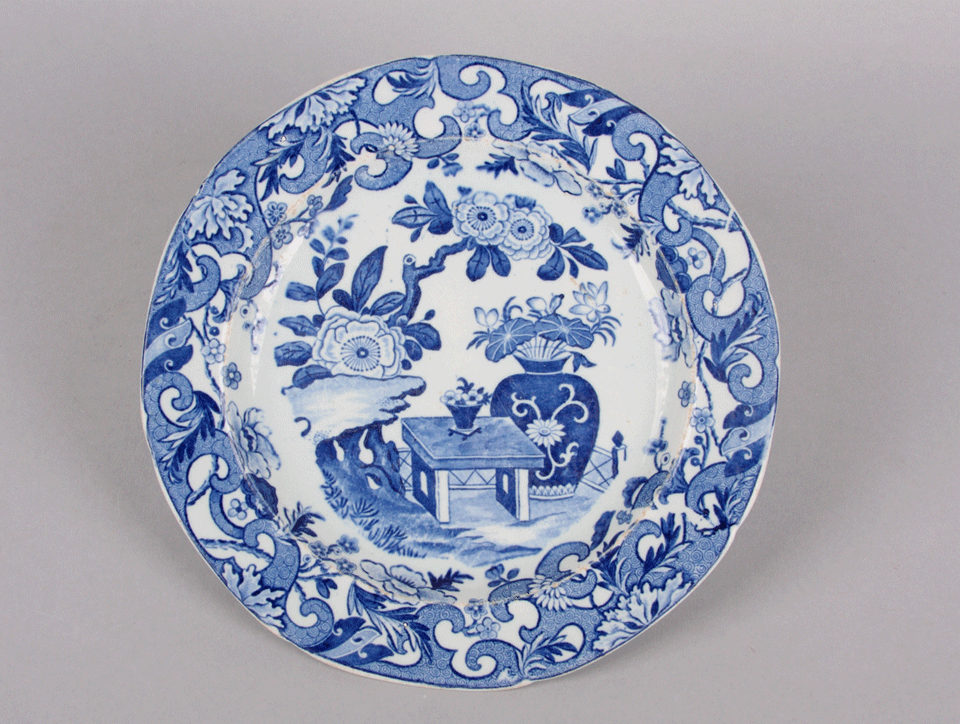
Mason's patent ironstone (click on picture to enter)
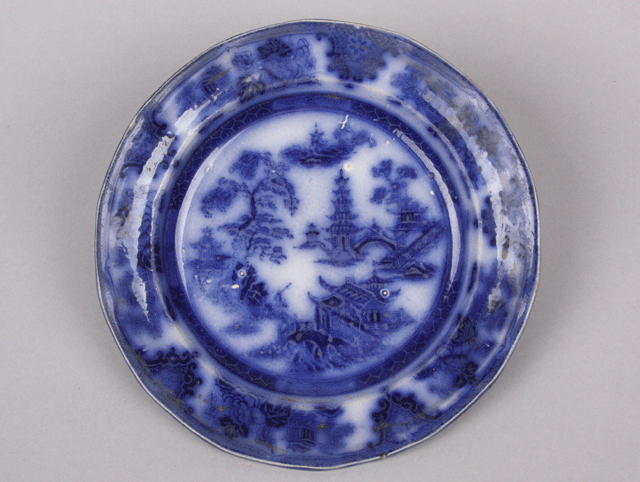
Adams & Co. of Tunstall (click on picture to enter)
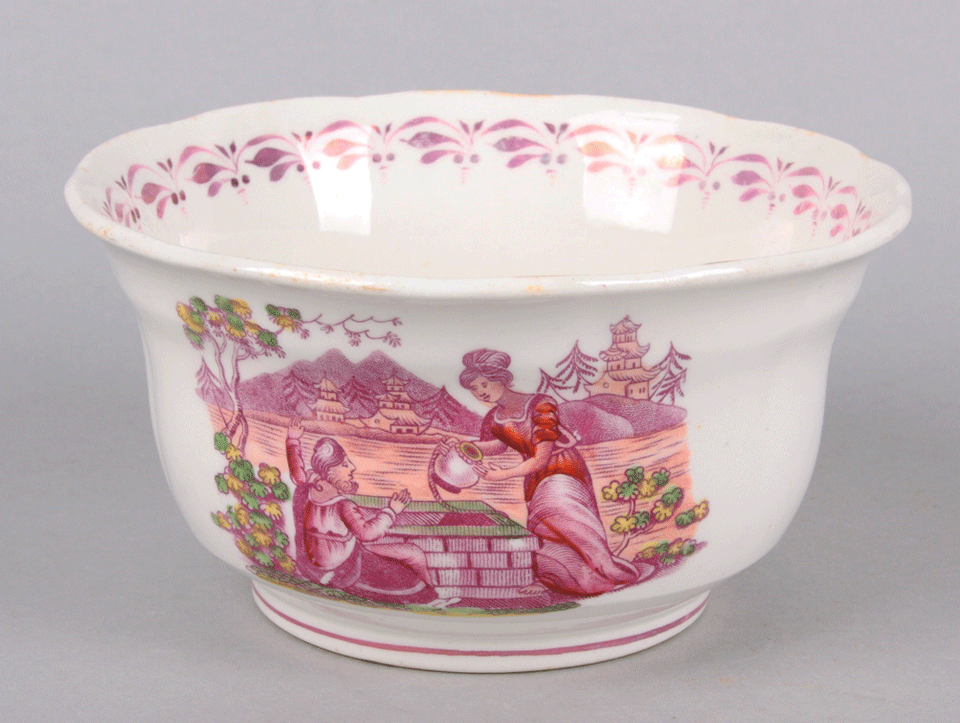
Sunderland lusterware (click on picture to enter)
As European manufacturers scrambled to satisfy middle-class demand,
they created
elaborate scenes of what they thought China looked like. Unfortunately, some of
the scenes were not only unrealistic but kitschy. The Chinese, not to
be outdone, responded with many fine trade wares in the late 1700s and 1800s,
as we discuss on a
previous page.
The active competition between ceramics made in China and "china" made elsewhere
continues to this day.
Soon after conquering much of the New World, the Spanish began making
mayolica (tin-glazed earthenware) like they had used at home.
Many mayolica pieces made in the New World were strongly influenced by
Chinese ceramics, and especially by blue-on-white pieces from Jingdezhen.
By selecting the picture below, you can learn about Mexican mayolica.
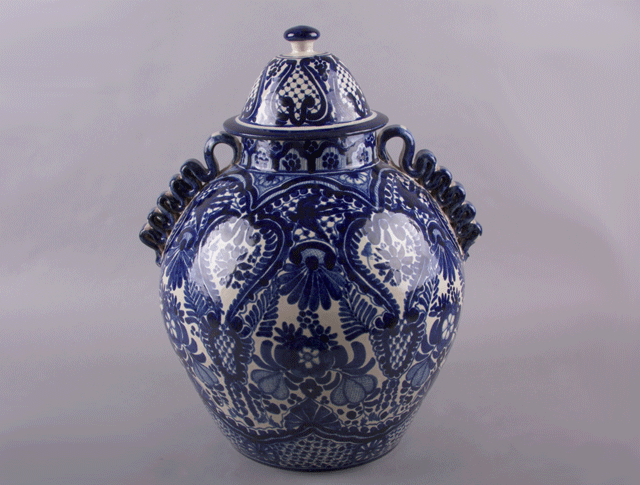
Mexican mayolica (click on picture to enter)
See source code for photo credits and copyright information. Page last revised on May 5, 2016. Please report problems to toh@unm.edu